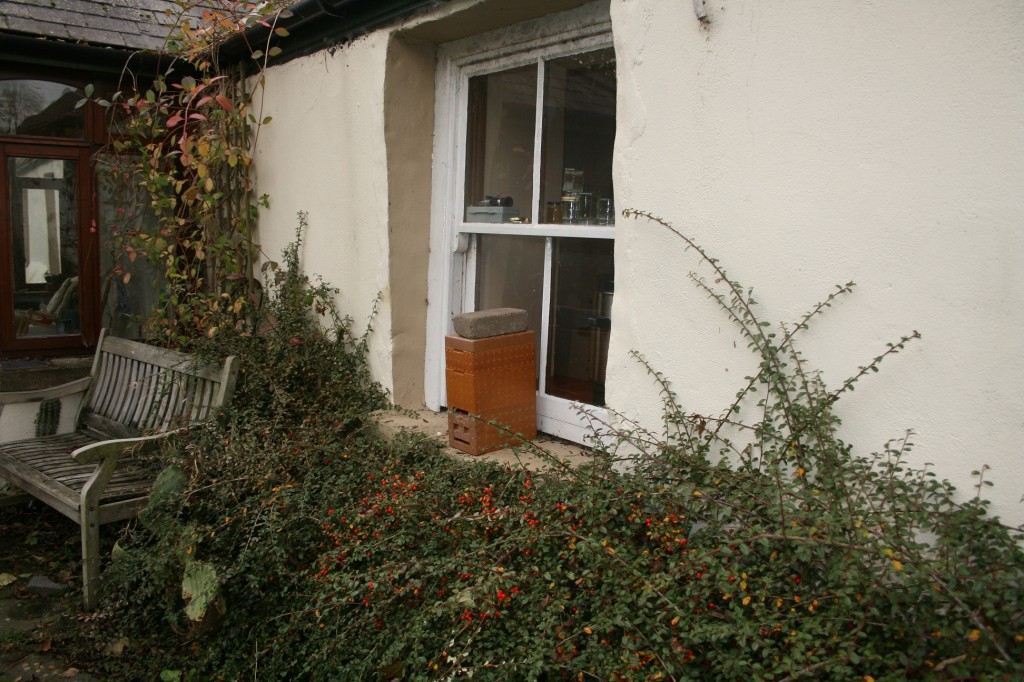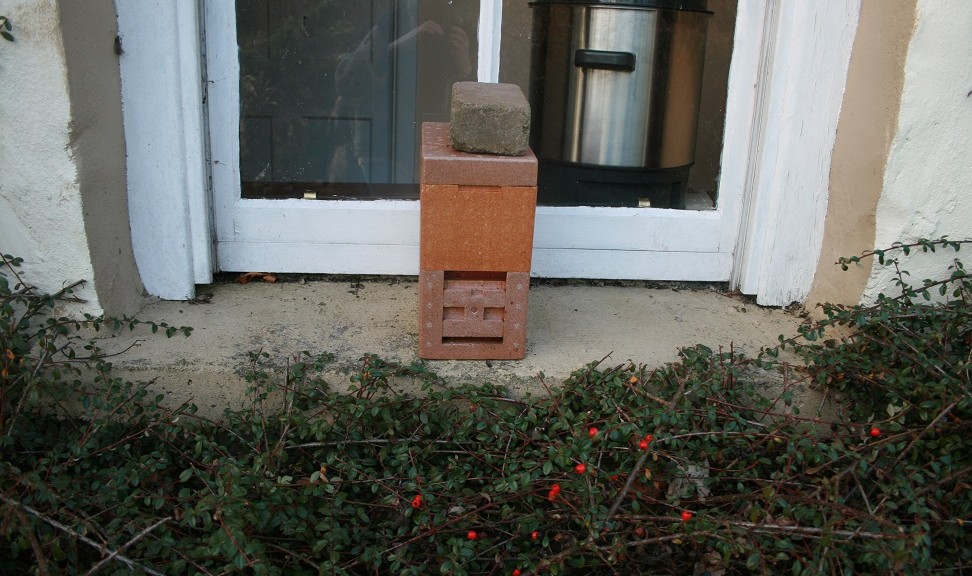At the end of the summer, it is not always possible to find a colony in need of a new queen, especially after a summer as good as this one (2014) when it seems all the queens mated well. Nor is it always possible to find colonies with sufficient sealed brood to make up a nuc without weakening them unduly before winter. So what to do with those last, late queens in your Apideas?
Here is the quandary I found myself in this year: I had several sad little queenless Apideas and two other strong ones, each with five frames (feeder removed) and with good laying queens in them. I can never quite face shaking the poor queenless bees out, nucs weren’t possible and there’s nothing so sad as watching an Apidea dwindle its way into winter with laying workers and a bellyful of slugs.
So here’s the recipe:
Ingredients
- 5 queenless Apideas
- 2 queenright Apideas
- 1 nuc box
- 2 fat frames of stores
- 1 frame pollen
- 2 empty drawn frames
- 1 spare Apidea body box
- 1 Apidea Miller feeder
- 1 large plastic bucket
- 1 water sprayer
- Foam
- Travelling mesh
Method
- Take the nuc and add in the two frames of stores one at each side leaving a good gap in the middle;
- Bung the entrance with foam;
- Now the brutal bit – take the plastic bucket and and lightly spray the inside of the bucket;
- Shook all the bees out of the queenless Apideas into the bucket and tumble them around together spraying a bit more water to keep them flightless;
- Once these are completely mixed shake in all the bees and the queen from the weakest of the strong Apideas. Do this as gently as possible especially once you’ve found the queen – be sure to shake that frame with the greatest care. If you can’t find the queen just be careful with all of them;
- While you are doing this sort out the frames of brood from the shaken queenright Apidea and the best frames of stores from the others and put them into the spare Apidea body box;
- Pour all the bees into the nuc and carefully put the other 3 frames in on top of them;
- Fit the crownboard covering the feed hole with travelling/ventilation mesh then take it away to an out-apiary and feed it feed it feed it, but keep the entrance as small as possible to deter robbers.
My nuc is now as strong as a horse, queenright, stuffed with ivy honey and ready for the winter.
Now for the rest:
- Take the spare Apidea body box and equip it with the frames of brood we mentioned earlier and the best two frames of stores;
- Set this box on top of the other queen-right Apidea;
- On top of this, fit the Miller feeder. If you’re using these be aware that you will need to throw in a handful of straws or wood-shavings or similar as the bees have direct access to the syrup and will float off and drown otherwise. Unless, of course, I’m doing something bloody silly in which case, Dear Reader, I ask you to correct me using the comment form at the bottom of this post.

By the way the Miller feeders come with a strip of queen excluder to pin underneath to keep ‘Herself’ out of the syrup.
The perfect place to overwinter an Apidea is the sort of south facing windowsill that is really too hot in summer – like the one in the pictures above.
I should add, I have overwintered Apideas on a single box in the past but you need to have them very well provisioned, you need to pack the roof space with fondant and you need to keep a close eye on them especially in the early spring.
Click here for instructions on how to feed an overwintering Apidea
Click here for full Apidea instructions
Copyright © Beespoke.info, 2014. All Rights Reserved.

I followed your advice and succesfully overwintered an apidea. Colony and queen survived, but not the way I liked. However, moisture was a problem, i mean that over time the level of moisture in the apidea increased. By the end of winter, the frames in the top were full of fungus. How to prevent this from happening?
Greetings from the Netherlands
P.S. i placed the apidea (two boxes) in a spare wooden beehive (6-frame, red cedar) with open bottom for ventilation.
That’s interesting!
I think if they make it through winter at all it’s great. After all, they are a very small colony and if there is a bit of damp it sort of goes with the territory. However if you can eliminate it, it’s better.
It must be due to condensation so Insulation and ventilation are the key.
If you had the Apidea inside a cedar hive that should have insulated it from the worst of the cold and the condensaton might have been worse if you hadn’t done that. I think your winters are much colder than ours!
You could try leaving the ventilation panel open but they do tend to propolise it.
Also, make sure the Apidea slopes slightly towards the front so if any moisture does gather, it can run out of the front and not gather at the back.